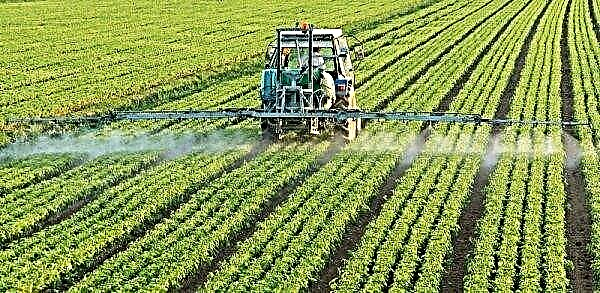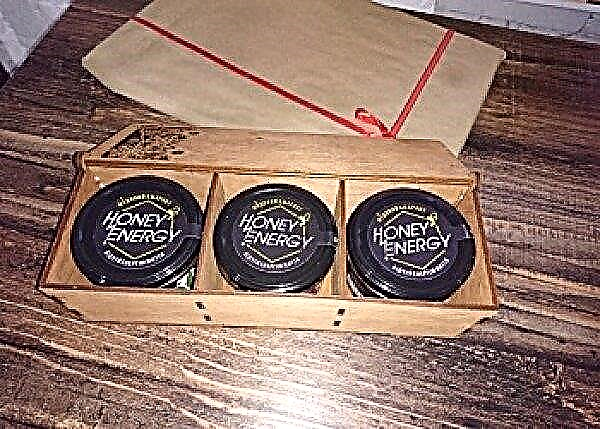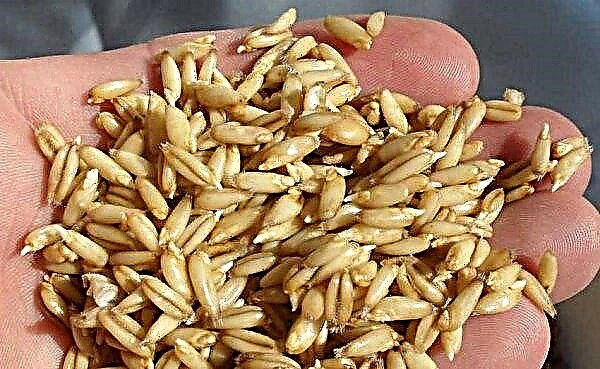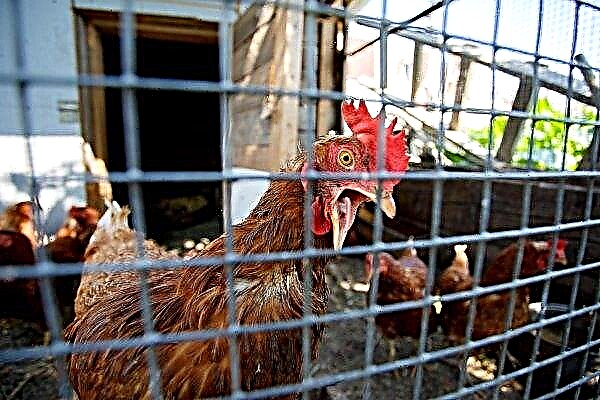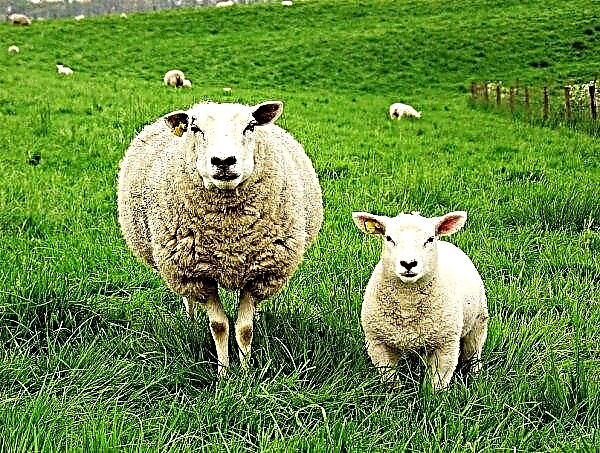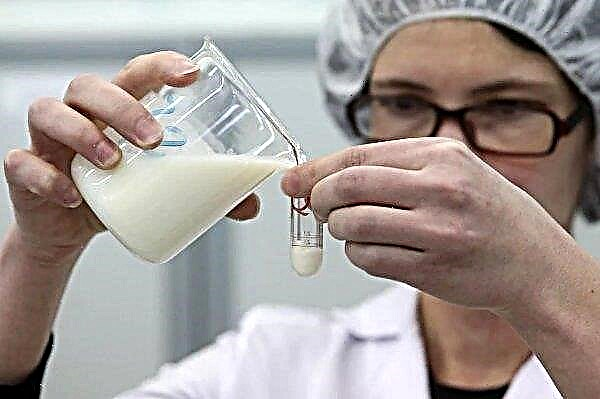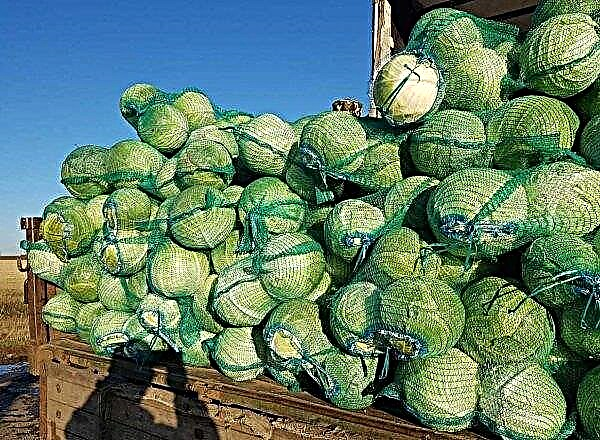When buying laying hens, novice farmers are faced with the problem of determining the age of birds. This is an important aspect that will affect the productivity of the economy as a whole. On average, the chicken completely ceases to rush by the age of 5. We suggest considering methods for visual recognition of the age of a laying hen.
How to determine the age of the chicken
It is important to understand that no method for determining the age of chickens gives accurate data. The error can be 4-6 months. The average life span of a laying hen at home is 10–15 years. The peak egg production falls on 1-2 years of life. It is advisable to buy individuals aged 20 months. and change them after 1-2 years. As the bird grows, its appearance changes. First, carefully study the description of the breed that you intend to purchase. Review parental performance and vaccination information.
As the bird grows, its appearance changes. First, carefully study the description of the breed that you intend to purchase. Review parental performance and vaccination information.
It is better to buy chickens genetically adapted to the climatic conditions of your region. In appearance, you can determine the health status of the chicken.Did you know? More than 900 breeds of chickens are known in the world.
Breed data allows you to determine age not only by external indicators, but also by weight. Mature individuals are also distinguished by behavioral responses.
Individuals to be discarded:
- sluggish, with pronounced signs of developmental delay;
- with external data clearly inconsistent with those stated in the pedigree annotation;
- staying in the molt phase for 2 consecutive years.

By external signs
Depending on the purpose of use, chickens are divided into:
- egg
- meat and egg;
- meat.
Beak
In the young, under the age of one year, the beak is painted in yellow, smoothly structured. As the bird grows older, it becomes darker, acquires a dull gray shade.
Important! Refuse to buy individuals with cropped beaks. The beak trimming procedure is carried out for individuals with increased aggressiveness. It is impossible to predict the nature of the offspring received from such a hen.
The beak is covered with scratches and chips. Over time, a thin layer resembling a film forms on it.

Legs and feet
The legs and metatarsus of young chickens are uniformly colored yellow. The skin is smooth, covered with scales. In older individuals, rough corns are noted on the lower part of the metatarsals.
The skin of the legs becomes gray, the scales are uneven, painted gray at first, and from 2 years old they acquire different shades of blue or red.
Scallop and lobes
By the state of the scallop and catkins, you can find out not only the age of the individual, but also determine its productivity. In the body of the bird, a pigment is produced that stains the shell of eggs and a lobe with a comb. Since it is common, with high productivity, it is actively excreted from the body, which is noticeable in external characteristics. Young representatives have the color of the crest and earrings in deep scarlet color. In old chickens, it becomes dull, acquires a pale pink color. The dermis is covered with a whitish coating, consisting of small scales. The comb is rough to the touch. In older chickens, blood flow to the crest decreases, therefore, in representatives of the age category from 2 years, it is always cold. In young laying hens, the crest and catkins are warm.
Young representatives have the color of the crest and earrings in deep scarlet color. In old chickens, it becomes dull, acquires a pale pink color. The dermis is covered with a whitish coating, consisting of small scales. The comb is rough to the touch. In older chickens, blood flow to the crest decreases, therefore, in representatives of the age category from 2 years, it is always cold. In young laying hens, the crest and catkins are warm.
On the stomach
Young individuals are well muscled and their stomach is supple. Physical state is determined by palpation, easily pressing on the lower part of the abdominal cavity.
In old representatives, the muscles are stiff, hidden under a thick layer of fat. On palpation examination, the abdomen does not give in to pressure, rigid.Important! Manipulations should be carried out carefully, since there is an egg with a thin shell inside the abdomen, which is easily damaged by aggressive pressure.
On plumage
Healthy young individuals are distinguished by brilliant uniform plumage, under which a soft fluff is probed. The presence of bald spots, tubercles on the skin is evidence of a way out of productive age or improper maintenance. Examine the plumage state around the cloaca. At this point, feathers should be clean. Contamination with feces indicates the presence of E. coli in the body of a bird. Representatives from the age of 2 years differ in disheveled feathers with a rigid structure. Particularly well noticeable is the age of the hens being shared with the rooster. Above the tail, they often have bare skin areas that do not have time to overgrow, because feathers are poorly restored with age.
Representatives from the age of 2 years differ in disheveled feathers with a rigid structure. Particularly well noticeable is the age of the hens being shared with the rooster. Above the tail, they often have bare skin areas that do not have time to overgrow, because feathers are poorly restored with age.
Pigmentation
Pigmentation has an effect.:
- level of productivity;
- type of feed.
 Even an experienced farmer can make a mistake in visualizing age by pigmentation, not knowing the diet of chickens. If the livestock is fattened by pumpkin, corn, alfalfa, the bird's body accumulates a sufficient amount of pigment that is not excreted even with active egg laying, which makes it impossible to determine the age in this way.
Even an experienced farmer can make a mistake in visualizing age by pigmentation, not knowing the diet of chickens. If the livestock is fattened by pumpkin, corn, alfalfa, the bird's body accumulates a sufficient amount of pigment that is not excreted even with active egg laying, which makes it impossible to determine the age in this way.In the eyes
The eye sockets of young chickens are convex. The color of the iris is bright. The pupil is clearly visible. With age, a cloudy foamy film forms on the iris. Upon visual inspection, it seems that the pupil is covered with a whitish coating.
Did you know? The shell protects the chicken and gives it good nutrition. It contains 7 thousand. pores that allow air to pass through.
Physique
The body constitution of the young individual is soft, the transitions and bends of the body are smooth. The sternum is round with a cartilaginous keel. As they grow older, the keel becomes coarse, the cartilage tissue is converted to bone. Inspection is carried out by palpation. At the time of inspection, measure the length from the keel to the bones. Normally, this indicator should not exceed a width of 3-4 fingers. The pubic bones, not overgrown with fatty deposits, easily diverge.
Inspection is carried out by palpation. At the time of inspection, measure the length from the keel to the bones. Normally, this indicator should not exceed a width of 3-4 fingers. The pubic bones, not overgrown with fatty deposits, easily diverge.
By weight
Weight indicators differ in the direction of use of the rocks.
The normal weight of a young chicken of egg breed at 6 months. is 1 kg. At the same age, the meat breed of chickens will weigh about 2 kg. Meat and egg representatives by 6 months. gain 1.5 kg.
By behavior
Young chickens are distinguished by behavior. They are more active. They are constantly in search of food, when kept on free-range. Old chickens imposingly walk around the yard. Move less.
By molting period
The molting process is a natural process of replacing plumage. In the adult generation, the replacement of the pen occurs 1 time per year, begins during a period of decreasing daylight hours. Old feathers go first from the most moving parts of the chicken: head and cervical. Then the process affects the back, chest and tail. During this period, the chicken noticeably loses weight, egg production decreases or is completely absent. At a young age, molting takes place in 3 stages:
At a young age, molting takes place in 3 stages:
- 1 month - chickens change their down to feathers;
- 3 months - replacement of down feather on the contour;
- spring - characteristic only of young birds.
How to distinguish old from young chicken
- The old chicken is larger than the young. Her comb is large, powerful.
- Under the abundant dull plumage is hidden yellow strong skin. In young women, the skin is soft, pink, easily damaged.
- The old cesspool is densely compressed, dry, round in shape. In young productive layers, the anus is wide, oval in shape, the skin around it is moist.
- The pubic bones of the old chicken are brought together, 1-2 fingers fit between them. On palpation examination, hard keel bones are noted.
- The quality of meat is also different. In old chickens it is tough, in young ones it is tender.
Egg quality definitions
Another criterion by which the age of the hens is determined is the quality of the egg products.
- The young egg lays eggs with a hard shell, which is hard to break. This is due to the genetic desire of the body to preserve their own kind. Old chickens lay eggs with thina shell that is easy to crush with your hands.
It will be useful for you to find out

- The first egg products, laid in size when they reach puberty, are 30–40% smaller than eggs of a fully formed chicken. Such eggs are called "chicken". Usually, young eggs carry 12–18 chicken eggs. They are suitable for use in food, but they should not be placed in an incubator.
- The first product may come out bloodied - this is normal for a chicken under the age of one year.
- During the first year of laying, eggs weigh 8% less, compared to the next.
- The color of the shell depends on the color of the feathers of the layer. Light individuals carry white testicles, dark and golden - brown.
- The color of the yolk will depend on the diet of the laying hen.
Did you know? In America, there is a unique breed of Araucan chickens, which gives egg products, painted in a bluish-green color.
Coop rejuvenation methods
Partial replacement of the chicken population is carried out at the age of 2 years. At this point, the bird carcass is well muscled and not too fat. It is better to buy new 2-3-month-old chickens in the spring. Over the summer, they will have time to walk the mass on the pasture, and by the fall they will begin to rush. Egg hens give the first egg production at the age of 5-6 months. after the second molt.
Taking into account age-related characteristics, it is possible to replace the livestock in a natural way by placing eggs under the quack. Chicks hatch after 19–22 days after laying the biomaterial. Having laid testicles in March, already in September, you can get a full-fledged productive livestock. By learning to determine the age of chickens by visual characteristics, you will be able to avoid cheating by the seller when buying a new livestock and quickly discard an unproductive bird for slaughter.
By learning to determine the age of chickens by visual characteristics, you will be able to avoid cheating by the seller when buying a new livestock and quickly discard an unproductive bird for slaughter.


